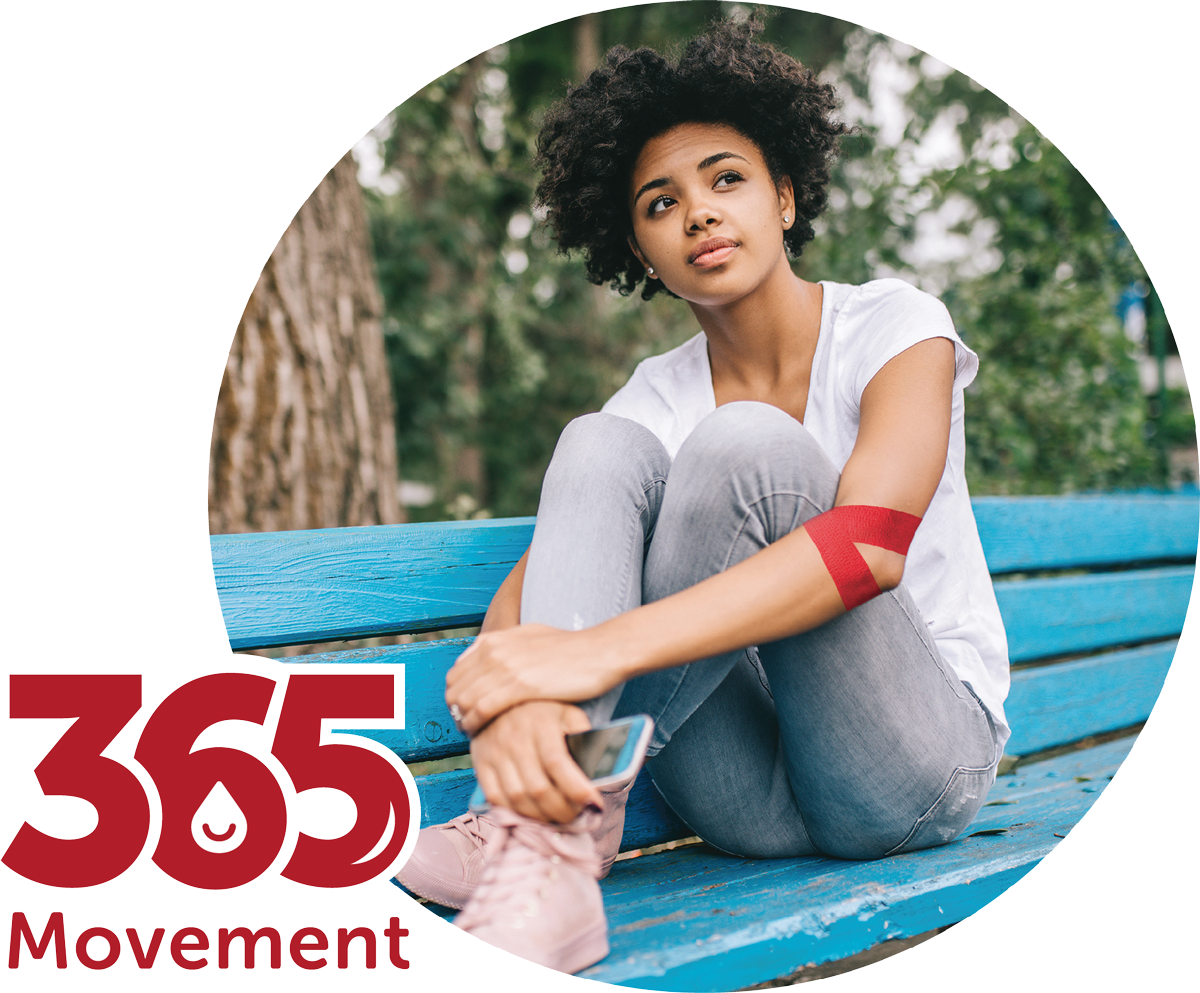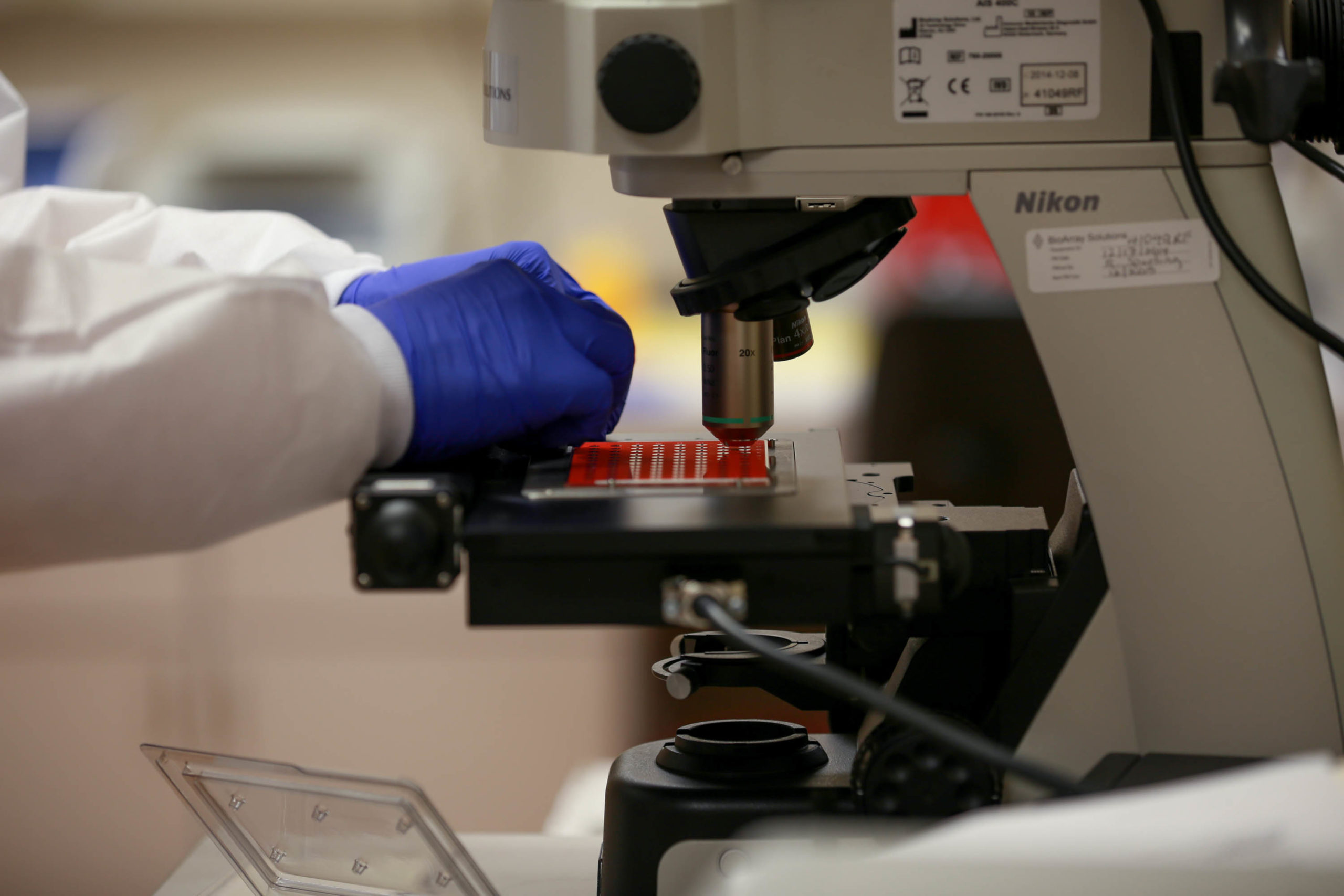Giving Blood
Become a Sickle Cell Hero
365 Movement
One in 365 African-Americans are born with Sickle Cell Disease. Learn how you have the potential to be someone’s hero.

What is Sickle Cell Disease?
Sickle Cell Disease (SCD) is a genetic blood disorder that affects the body’s red blood cells.
Healthy people have disc-shaped red blood cells, but people who have SCD have blood cells that tend to change to a crescent shape. These thin sickle-shaped cells have difficulty passing through tiny blood vessels.
The symptoms of SCD can range from fatigue and breathlessness to unbearable pain that comes with the swelling of the joints, hands and feet. Stroke, liver disease and delayed growth are just a few of the complications it can trigger.

What is a Sickle Cell Hero?
Sickle cell patients may need many blood transfusions in a lifetime, some as frequently as every four weeks. However, multiple transfusions can cause complications. To reduce complications, finding donors whose blood types more precisely match these patients is crucial.
We call these donors Sickle Cell Heroes.
They save the lives of those affected by the disease and greatly reduce the negative effects of the multiple transfusions patients need to survive. Transfusions can increase the amount of healthy red blood cells in the bloodstream and lessen the effects of the sickle-shaped cells.
How do I know if I am a Sickle Cell Hero?
Donate blood with LifeSouth, and your blood will be tested to see if you are a special match for a patient with sickle cell disease. SCD predominantly affects African-Americans. Since matches are much more likely to be found within a patient’s own ethnic group, African-American donors may be the best hope for patients with SCD. Diversity is the key to successfully matching blood donors to the patients who need them.
What if I am a Sickle Cell Hero?
If you are notified that you are a Sickle Cell Hero, we strongly urge you to donate as often as you can. Sickle cell patients who receive frequent transfusions are in need of special blood like yours.
Because the blood they receive will come from a Sickle Cell Hero, the possibility of complications or reactions to their blood transfusions will be much lower. This can mean more successful treatments, and it can also lessen the likelihood of strokes for sickle cell patients.
You Could Be Their Hero…
Marrow and Cord Blood Treatment
For some patients, usually children, a transplant of bone marrow or cord blood offers the possibility of curing SCD.
The donor must closely match the patient’s tissue type for a transplant. Patients from racially or ethnically diverse backgrounds often have uncommon tissue types. According to the National Marrow Donor Program, a patient’s likelihood of finding a match on the Be The Match Registry ranges from 76 percent to 97 percent, depending on race or ethnicity. African-American patient have an estimated 76 percent likelihood of finding a match on the registry – meaning they are least likely to find a match.
By increasing the number of minority marrow donors and cord blood units on the registry minority patients will be more likely to find a match. By joining the registry, you may be called to donate marrow to any patient in need of a transplant. Contact your local LifeSouth center if you are interested in joining the registry.
Become a Hero!
Please consider supporting the 365 Movement by donating blood, hosting a blood drive, or sharing your story which will help us educate the public on the importance of blood donation to Sickle Cell Disease patients.
